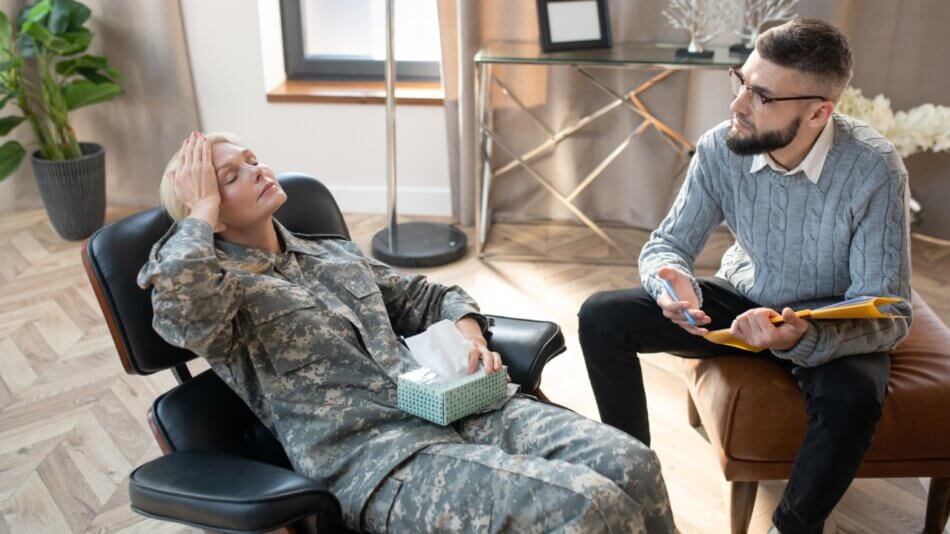An intensive outpatient program for trauma recovery offers a structured path to healing while you maintain your daily routines and independence. If you’ve experienced trauma, you may need more support than once-weekly therapy but don’t require 24-hour supervision. In such cases, a trauma-focused IOP can provide the clinical intensity and flexibility you need. In this article, you’ll learn how Partial Hospitalization Programs (PHPs) and Intensive Outpatient Programs (IOPs) compare, which evidence-based therapies they integrate, how they’re scheduled, what insurance covers, and how to choose the best fit for your recovery journey.
Compare PHP and IOP
What is PHP?
A Partial Hospitalization Program, often called PHP, sits between inpatient care and standard outpatient therapy. You attend treatment daily, usually five days a week, for four to six hours per day. PHPs deliver a supportive environment with:
- 20 or more hours of therapeutic services weekly
- Individual and group therapy
- Psychoeducation, medication management, and nursing support in some settings
Medicare Part B covers Partial Hospitalization Programs for trauma and mental health when your care plan indicates at least 20 hours per week and the provider accepts assignment (Medicare). Many private insurers and Medicaid plans also cover PHP services, making a partial hospitalization program for adults an accessible option.
What is IOP?
An Intensive Outpatient Program requires a minimum of nine hours of weekly therapy, most often divided into three-hour sessions held three to five evenings each week. Key features include:
- Group and individual therapy, psychoeducation, and skills training
- Coordination with your outpatient psychiatrist or primary provider for medication management
- Duration of four to twelve weeks, depending on clinical need
IOPs serve those stepping down from inpatient or PHP care or stepping up from once-weekly counseling (AMFM Treatment). Medicare also covers IOP services when your treatment plan meets requirements for Opioid Use Disorder or mental health conditions (Medicare). To explore specialized offerings, visit our intensive outpatient program for adults.
Key differences between PHP and IOP
| Feature | PHP | IOP |
|---|---|---|
| Hours per week | 20+ | ≥ 9 |
| Schedule | Weekdays, daytime | Evenings or daytime flex |
| Clinical intensity | High, multidisciplinary team | Moderate, individual counseling integration |
| Medication management | On-site | Coordinated off-site |
| Typical duration | Weeks to months | 4 to 12 weeks |
| Insurance coverage | Medicare Part B, private, Medicaid | Medicare Part B, private, Medicaid |
| Independence level | Structured day treatment | Greater flexibility to maintain routines |
Overall, PHPs deliver a more immersive, daytime treatment setting, while IOPs offer flexibility for work, school, or family responsibilities.
Explore trauma therapies
Evidence-based approaches
Both PHPs and IOPs integrate proven therapies to address trauma symptoms, foster coping skills, and build resilience. Common modalities include:
Cognitive Behavioral Therapy (CBT)
: Targets negative thought patterns and develops healthier responses to triggers.
Dialectical Behavior Therapy (DBT)
: Focuses on emotion regulation, distress tolerance, and interpersonal effectiveness to stabilize mood and reduce self-destructive behaviors.
Experiential therapies
: Uses art, music, equine therapy, or yoga to process traumatic memories and promote mind-body integration.
Many structured day programs offer a php program focused on dbt and cbt, ensuring a tailored treatment program for trauma recovery.
Group vs individual sessions
Group therapy and one-on-one counseling each play a unique role in your healing process:
-
Group therapy
-
Promotes shared experiences and peer support
-
Allows practice of social skills in a safe environment
-
Reinforces accountability and reduces isolation
-
Individual therapy
-
Offers personalized attention to your coping style
-
Addresses sensitive issues like past abuse or grief
-
Sets goals and tracks progress with your therapist
A balanced blend of group and individual sessions—often called mental health iop with group and individual therapy—ensures comprehensive care necessary for lasting recovery.
Assess program structure
Treatment frequency and duration
Understanding how often you’ll attend and for how long helps you weigh options and plan logistics:
PHP schedules
- Five days per week, typically Monday through Friday
- Four to six hours each day
- Total of 20–30+ hours weekly
IOP schedules
- Three to five sessions per week
- Three-hour blocks (evening or daytime)
- Minimum of nine hours weekly; some programs offer up to 12 hours
Discovery Mood & Anxiety’s IOP, for example, offers adults and adolescents three-hour evening sessions, supporting those transitioning from inpatient or outpatient care (Discovery Mood).
Flexibility and independence
- In a PHP, you benefit from a structured day treatment setting that reduces environmental triggers and offers consistent support. To learn more, see our structured day treatment for adults.
- IOPs let you practice coping skills in real-time, returning home or to work each day. If you need to maintain employment or family responsibilities, an IOP can be ideal.
Psychiatric involvement and medication management
In PHPs, a multidisciplinary team—psychiatrists, nurses, and social workers—often manages medication on-site. In contrast, IOPs may require you to coordinate with your personal psychiatrist or primary care provider for prescriptions and follow-up. For those stepping down from inpatient care, a php program for adults transitioning from residential care ensures continuity of clinical quality.
Evaluate insurance options
Insurance plans and eligibility
Coverage for PHP and IOP varies by provider and plan type. Key factors include:
- Network restrictions and in-network providers
- Prior authorization requirements
- Annual session caps and medical necessity guidelines
Always confirm with your insurer whether your plan covers mental health IOPs or structured day treatment for depression and anxiety. You may find details in your policy’s mental health benefits or by calling customer service.
Medicare coverage details
- IOP services: Covered under Medicare Part B when you need at least nine hours of therapeutic services weekly, including group and/or individual therapy (Medicare).
- PHP services: Covered when you receive a minimum of 20 hours of psychiatric care per week in a hospital outpatient department or community mental health center (Medicare).
Coinsurance applies after meeting the Part B deductible. Ensure your program accepts assignment to maximize benefits.
Out-of-pocket costs and assistance
Without insurance, average costs may range:
- IOP: $250–$500 per day (AMFM Treatment)
- PHP: $200–$600 per day (Recovered)
Many facilities offer sliding-scale fees, payment plans, or charitable scholarships. If cost is a concern, ask potential programs about financial assistance and explore a day treatment for adults that accepts insurance.
Choose your program
Personal needs assessment
Before committing, reflect on:
- Severity and frequency of trauma-related symptoms
- Your daily schedule and obligations
- Support network and living environment
- Goals for recovery and independence
Matching your needs with the right level of care ensures you get comprehensive care without unnecessary restrictions.
Facility features to consider
When evaluating centers, look for:
- Evidence-based therapeutic offerings (CBT, DBT, experiential)
- Multidisciplinary teams including psychiatrists and therapists
- Group sizes that allow both privacy and peer support
- Aftercare and relapse prevention planning
- Insurance acceptance and clear billing practices
Questions to ask providers
- What therapies do you specialize in for trauma recovery?
- How do you involve psychiatrists in treatment and medication management?
- Do you accept my insurance and will you obtain prior authorization?
- What aftercare services do you offer to maintain long-term progress?
- How do you personalize treatment plans to my unique challenges?
Direct questions like these to ensure you find a supportive environment that aligns with your goals.
Maintain long-term progress
Aftercare planning
A solid aftercare plan sustains gains you made in PHP or IOP. Options include:
- Continued outpatient therapy or intensive outpatient therapy for relapse prevention
- Peer support groups focused on trauma and emotional regulation
- Regular check-ins with a psychiatrist or case manager
Relapse prevention strategies
- Identify triggers and develop coping toolkits
- Practice mindfulness and relaxation techniques daily
- Engage in healthy routines: sleep hygiene, nutrition, exercise
- Build accountability through a sponsor or support partner
Peer support and community resources
Connecting with others who understand trauma can bolster your resilience:
- Trauma-informed support groups and workshops
- Community mental health organizations
- Online forums moderated by clinicians
- Local chapters of veteran or survivor networks
For co-occurring conditions like mood instability or substance use, explore php and iop for adults with co-occurring disorders or iop therapy for adults with depression or stress.
Your next steps
Choosing between a PHP and an IOP for trauma recovery hinges on how much structure and clinical intensity you need versus the flexibility to maintain your life outside treatment. By comparing schedules, therapies, insurance options, and facility features, you’ll find a tailored treatment program that supports your healing journey. Reach out to providers, verify coverage, and ask the right questions—your path to comprehensive care and lasting recovery starts with an informed decision.
If you’re ready to learn more, explore our resources on php mental health treatment for adults or day treatment program for depression or anxiety to find a program that fits your goals and budget.









